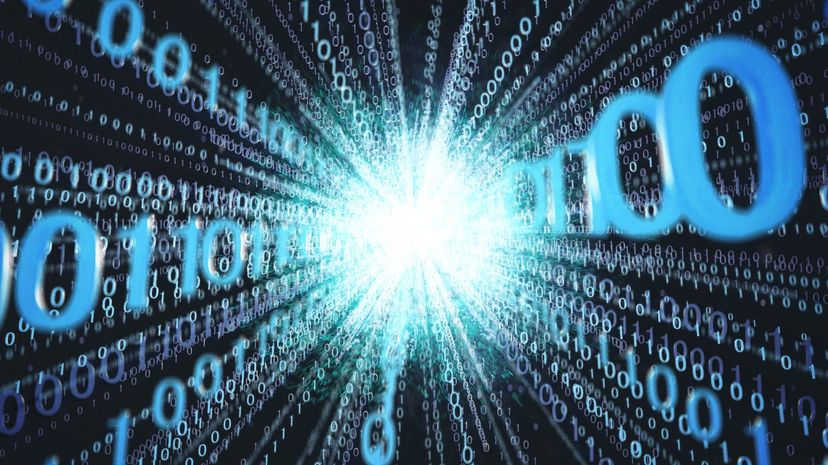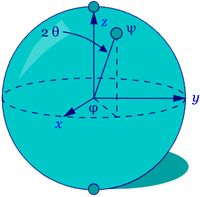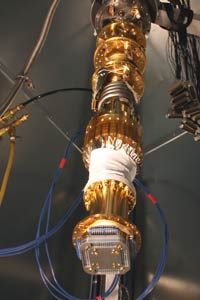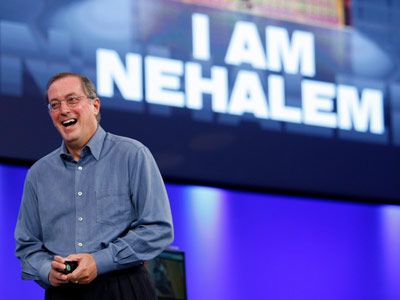Quantum computers could one day replace silicon chips, just like the transistor once replaced the vacuum tube. But for now, the technology required to develop such a quantum computer is beyond our reach. Most research in quantum computing is still very theoretical.
The most advanced quantum computers have not gone beyond manipulating more than 16 qubits, meaning that they are a far cry from practical application. However, the potential remains that quantum computers one day could perform, quickly and easily, calculations that are incredibly time-consuming on conventional computers. Several key advancements have been made in quantum computing in the last few years. Let's look at a few of the quantum computers that have been developed.
1998
Los Alamos and MIT researchers managed to spread a single qubit across three nuclear spins in each molecule of a liquid solution of alanine (an amino acid used to analyze quantum state decay) or trichloroethylene (a chlorinated hydrocarbon used for quantum error correction) molecules. Spreading out the qubit made it harder to corrupt, allowing researchers to use entanglement to study interactions between states as an indirect method for analyzing the quantum information.
2000
In March, scientists at Los Alamos National Laboratory announced the development of a 7-qubit quantum computer within a single drop of liquid. The quantum computer uses nuclear magnetic resonance (NMR) to manipulate particles in the atomic nuclei of molecules of trans-crotonic acid, a simple fluid consisting of molecules made up of six hydrogen and four carbon atoms. The NMR is used to apply electromagnetic pulses, which force the particles to line up. These particles in positions parallel or counter to the magnetic field allow the quantum computer to mimic the information-encoding of bits in digital computers.
Researchers at IBM-Almaden Research Center developed what they claimed was the most advanced quantum computer to date in August. The 5-qubit quantum computer was designed to allow the nuclei of five fluorine atoms to interact with each other as qubits, be programmed by radio frequency pulses and be detected by NMR instruments similar to those used in hospitals (see How Magnetic Resonance Imaging Works for details). Led by Dr. Isaac Chuang, the IBM team was able to solve in one step a mathematical problem that would take conventional computers repeated cycles. The problem, called order-finding, involves finding the period of a particular function, a typical aspect of many mathematical problems involved in cryptography.
2001
Scientists from IBM and Stanford University successfully demonstrated Shor's Algorithm on a quantum computer. Shor's Algorithm is a method for finding the prime factors of numbers (which plays an intrinsic role in cryptography). They used a 7-qubit computer to find the factors of 15. The computer correctly deduced that the prime factors were 3 and 5.
2005
The Institute of Quantum Optics and Quantum Information at the University of Innsbruck announced that scientists had created the first qubyte, or series of 8 qubits, using ion traps.
2006
Scientists in Waterloo and Massachusetts devised methods for quantum control on a 12-qubit system. Quantum control becomes more complex as systems employ more qubits.
2007
Canadian startup company D-Wave demonstrated a 16-qubit quantum computer. The computer solved a sudoku puzzle and other pattern matching problems. The company claims it will produce practical systems by 2008. Skeptics believe practical quantum computers are still decades away, that the system D-Wave has created isn't scaleable, and that many of the claims on D-Wave's Web site are simply impossible (or at least impossible to know for certain given our understanding of quantum mechanics).
If functional quantum computers can be built, they will be valuable in factoring large numbers, and therefore extremely useful for decoding and encoding secret information. If one were to be built today, no information on the Internet would be safe. Our current methods of encryption are simple compared to the complicated methods possible in quantum computers. Quantum computers could also be used to search large databases in a fraction of the time that it would take a conventional computer. Other applications could include using quantum computers to study quantum mechanics, or even to design other quantum computers.
But quantum computing is still in its early stages of development, and many computer scientists believe the technology needed to create a practical quantum computer is years away. Quantum computers must have at least several dozen qubits to be able to solve real-world problems, and thus serve as a viable computing method.
For more information on quantum computers and related topics, check out the links on the next page.



